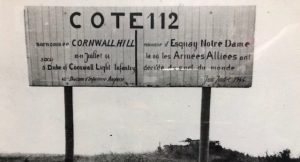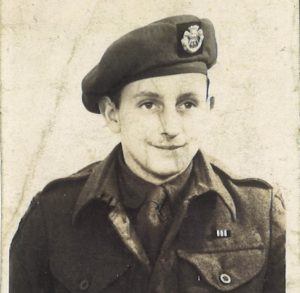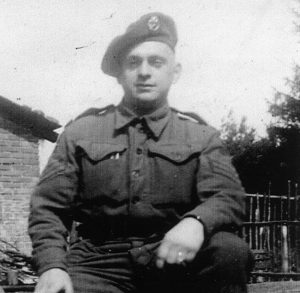During the Second World War, the 5th were a volunteer battalion, part of the Territorial Army – a part time component of the British Army. Despite this, the men landed in Normandy in late June 1944, going on to fight their way across North-West Europe whilst taking part in some of the fiercest and bloodiest battles of the entire conflict.
The Duke of Cornwall’s Light Infantry – 5th Battalion

The outbreak of war saw the 5th Battalion located in East Cornwall with its partner battalion the 4th stationed in the west of the county. Over the next five years both battalions were to undergo similar experiences of training, guard duties, anti-invasion defence and a mobile counter-attack role. For a while they served in the same brigade, then during late summer 1942, the 4th and 5th finally went their separate ways when the 5th was selected to form part of the 214 Independent Infantry Brigade. The 4th was not destined to become a fighting formation but instead carried out the vital task of training replacements and managing the transit camps before the Normandy landings.
The 5th landed in Normandy on June 22nd, 1944 as part of the 43rd (Wessex) Division. It took part in its first action on June 27th at Cheux where the fighting quality of the Battalion was demonstrated with the destruction of five German tanks who had attacked Battalion headquarters, sadly 20 men were killed in this battle including the Commanding Officer of the Battalion Lieutenant Colonel Atherton. The first battle set the standard for the remainder of the campaign, the 5th showed courage and professionalism in all its encounters, sadly this meant the loss of many good men. The battle for Hill 112 during July 10/11th was particularly bad in which a mere 18 days after setting foot in Normandy it suffered so many casualties it was feared it would be broken up. However, in one of those remarkable instances of war the 4th Battalion in its final act before being disbanded sent a draft of 100, mainly Cornishmen, to the 5th, so ensuring it retained its unique identity for a little longer. The Battalion fought until the end, on German soil with victory won and the task of rebuilding and reconciliation ahead.
On display in our Second World War galleries we have a number of artefacts relating to the Battle for Hill 112 in particular. If you’re interested to find out more, why not read the story of the small, square piece of metal, unremarkable except for the bullet hole which warps its otherwise smooth surface, selected as our ‘object of the month’ in July 2017.
5th Battalion Unit Record
These two documents have been created as an aid for researchers and to collate information that although currently available in paper form at the museum are not to be found in one single document and certainly not in a format that enables a degree of interrogation. The spreadsheet lists individuals who served in the 5th Battalion Duke of Cornwall’s Light Infantry during the Second World War and in some instances, as members of the 4/5th (Territorial) Battalion before the outbreak of the Second World War. The word processing document includes explanatory notes and useful information regarding the spreadsheet itself. It is intended to update these documents twice a year as undoubtedly omissions and additional information will come to light.
Soldiers of the 5th...
Private Anthony Adams MM
Service Number 14206002
Signals Platoon, 5th Battalion Duke of Cornwall’s Light Infantry
CSM William Gordon Ternouth
Service Number 5438203
Mortar Platoon, Support Company, 5th Battalion Duke of Cornwall’s Light Infantry


